Rafael Advanced Defense Systems Ltd has announced that its ‘Trophy Active Protection System’ has been selected for the next phase of detailed assessment and integration by the Ministry of Defence for the British Army’s Challenger 3 Main Battle Tank.
The firm say that the selection is a result of a study conducted by the MoD as part of the upgrade programme led by prime contractor Rheinmetall BAE Systems Land (RBSL), which will entail detailed integration and system trials of this lighter Trophy variant (Trophy MV), to fit the particular requirements of this vehicle.

“Developed by Rafael in response to successful anti-armor attacks, Trophy APS provides mature, combat-proven protection against rocket and missile threats and simultaneously locates the origin of the hostile fire for immediate response. Trophy is the only fully integrated, combat-proven APS in the world and has been installed on Israel Defense Forces’ Merkava tanks since 2010, and has also been installed on the Namer APCs. Trophy has also been supplied to four U.S. Army Abrams MBT brigades, and will soon be supplied to Germany for its Leopard MBTs.
Trophy has made numerous combat interceptions with no injuries to crews or dismounted troops or damage to platforms since its first operational interception in 2011. Trophy has accrued over 1,000,000 operating hours, including 5,400 successful field tests, and is now under contract for serial production of over 1,800 systems.”
You can see the system in action below.
David Farmer, Team Leader for the Challenger 3 delivery team at Defence, Equipment & Support, the procurement arm of the U.K. MOD, said:
“I am delighted to welcome Rafael to our cohort of industry delivery partners who are working together to bring Challenger 3 to life. This is a significant program for Defence, and the British Army and represents a huge shift in the modernization of our land forces. The pioneering new technology that we are planning to use will allow us to deliver an immense warfighting capability.”
Brig. Gen (Ret.) Michael Lurie, head of Rafael’s land maneuverability systems directorate:
“Trophy APS has saved the lives of numerous soldiers and has been instrumental in protecting assets on the battlefield and enabling tank crews to maneuver safely under anti-tank fire and perform their missions safely and fully. This system has changed the rules of the game in the armored warfare arena, and the U.K.’s decision to choose Trophy for the protection of its crews, ushers in a new era for its armored forces as well. We are thankful to our UK partners for joining other nations and tier-1 armored corps who have put their trust in Rafael’s Trophy APS.”

Colonel Will Waugh, Programme Director – Armour Main Battle Tank Programme, said,
“This is an exciting moment for the Army as we make the first steps towards an Active Protection System capability for the CR3 Main Battle Tank. This technology, already battle proven with our international allies and partners, will deliver a step change in protection against guided and unguided anti-tank weapons – a threat that continues to proliferate around the world and grow in lethality. This marks another step forward in delivering a modernised Main Battle Tank able to defeat any threat it might meet in the future.”
Trophy APS is the only fully-integrated, combat-tested APS in the world.


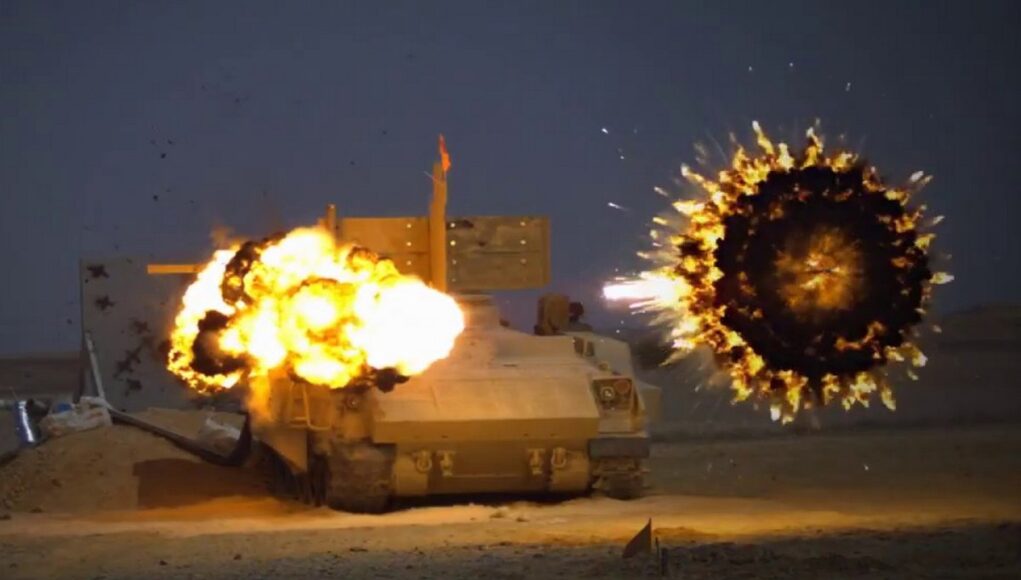



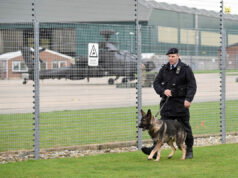

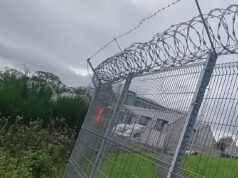

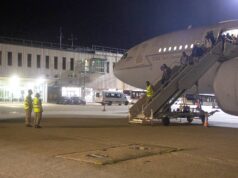

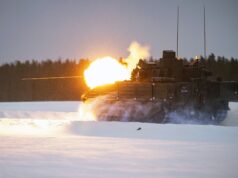

With US and Germans choosing Trophy for their tanks, i think it was a done deal. The other kid in town is Ironfist, i think the Dutch CV90 will get it.
The interesting thing of this buy is that it seems to be a lighter Trophy version. Power/weight issues?
Actually it will be the Trophy MV which is in the middle of the Trophy range. It’s a lighter, more up to date package than the original heavyweight and is less expensive.
You should not fear, no capability has been sacrificed.
Excellent
Germany only got trophy for 20 tanks for its Lithuanian battle group, with newly built hulls.
The rest of the fleet will almost certainly get RMs new ADS instead.
Why? Because trophy uses radar (big no no when fighting Russians with lots of arty), which needs lots of electricity, which requires big generators, which dont fit the old Leo hulls.
Its also less dangerous to dismounts.
The Trophy system can either have the radar activated by either the laser warner or the IR detector, or it is on constantly. Without radar or lidar there is no way for the tank’s ADS to know the distance or the velocity of the incoming threat. Rafael say that the low power radar has a low probability of intercept.
“Without radar or lidar there is no way for the tank’s ADS to know the distance or the velocity of the incoming threat.”
Rheinmetall disagrees with you:
“The protection mechanism is complex and demands intelligent interaction between various high-tech components. High-performance sensors (pre-warners) have the vehicle’s surroundings in view at all times as part of 360-degree protection.
If they detect an incoming projectile, for example, in the near zone that they are monitoring, they immediately report this threat to a central processing unit, which activates further electro-optical sensors. The projectile is identified and its precise flight data calculated. Once this is complete, the third stage of ADS begins and the threat is immediately destroyed before reaching the target”
https://www.rheinmetall-defence.com/en/rheinmetall_defence/public_relations/themen_im_fokus/active_defence_system_ads/index.php
Note 1:00 here
https://www.youtube.com/watch?v=iKeuVHKc92U
Ironically enough the trophy system itself was developed by a German company, Rafaele just bought it from them.
You will find this pattern with a lot of “Israeli designed” systems.
So that only leaves 20 tanks without an APS then. lol
So let me get this right, the MOD which funded the medusa soft kill program in 2016 to the tune of £7.6M which was completed in 2019 was followed by funding project ‘Icarus’, in 2017 to the tune of £10 million which looked at the feasibility of fitting our armour with an Hard kill Active Protection System which was completed in 2020 is now looking at yet another trail and I quote from the British army press release:
Pioneering new technology for Challenger 3 tank
A key step forward in the development of the Challenger 3 main battle tank has been achieved, with a defence company given the green light to carry out trials of an anti-missile system.
For a Battle proven system which was first fielded in 2010 and which if we select it, won’t see service until at least 2030. Maybe its time to sack all the idiots who run procurement policy at the MOD and recruit a load of 10 year olds as I would put money on the table they would do a much better job , get the job done quicker, cheaper and still be home in time to watch Nutty Noah and Nelly on the Skylark.
So you think they should fit Trophy without any kind of testing? Seems a mite stupid.
After 4 years of review, the MOD have decided to trial Trophy light which in itself will take another 4 years and then the MOD have only set their sights on purchasing 60 sets. The attached screen dump shows how different Trophy light is. :
So in a nutshell having dragged their feet, the wonks at the MOD have decided to go for the cheapest and least effective version and just to ensure there are plenty of jollies they have decided to drag their feet for another 4 years.
This is LV not MV that Ron5 writes above..
He’s confused poor soul. As well as wanting the MoD to buy a system without any testing, he’s got the wrong system.
The system the UK is buying used to be called Trophy Light but it changed it’s name to Trophy MV some years ago and afterwards, a new Trophy LV was introduced. So the range now has 3 types. The MV is in the middle and is a lighter, more current version of the original heavyweight system. Its performance has been demonstrated to be equivalent to the original system. But as you said, it’s not the LV that he’s wittering on about.
Ron,
It may help your case if you had a butchers at the Rafael Trophy sales brochure , they are only offering 2 versions of trophy. HV and LV.:
https://www.rafael.co.il/wp-content/uploads/2019/03/Trophy-Family-brochure.pdf
The Trophy family brochure as per the Rafael website:
https://www.rafael.co.il/wp-content/uploads/2019/03/Trophy-Family-brochure.pdf
there is no MV version
This article offers an explanation as to why you are so confused. In a nutshell it says HV has been dropped and replaced with MV. and undergone a rename.
Which supports my statement that selection of MV does not mean a reduction in capability. Just weight & cost.
https://www.overtdefense.com/2021/06/24/trophy-mv-aps-to-be-integrated-on-challenger-3-for-trials/
So just to clarify the position . How many versions of Trophy are actually available now , what are they called…and what version are we getting ?
It states a Test fitting to ensure it works with the CH3, no one is going to fit anything without ensuring the following. 1/ IT WORKS. 2/ IT CAN BE DELIVERED. 3/ ITS VALUE FOR MONEY. as just chucking darts at a wish list, bearing in mind Army issued a Procurement for Land Rover Replacements and wanted top of the Range LR Defenders @ £45k each. for Range work and when tested was not suitable and a £25k Pick up was selected. £20k saving by testing….
Who says they are just getting 60 sets? I thought the idea was to have fewer upgraded tanks but fully equip them. If there are only 60 I am sure they could get more as an urgent operational requiement.
Not a big surprise, but welcome nonetheless.
Fantastic news, this is exactly what is needed, and is long overdue. APS is what in my opinion sets tank generations apart.
For those who want to know a little more about Active Protection Systems and what is out there, this geezer knocked out a post 4 years ago on the very subject, well worth a butchers:
https://below-the-turret-ring.blogspot.com/2017/01/hardkill-aps-overview.html
If it works – don’t knock it!
Can the Trophy intercept a missile like the Javelin that dives down on the tank from above? From what I’ve seen the Trophy doesn’t have any interceptors pointing directly up.
The full version can, but the light version can’t
Think of Trophy as a turreted claymore mine that fires a sheet of tungsten cubes with a narrow spread at the threat. The tank will have two separate and independently moveable turrets. These each have over 180 degrees of lateral movement and can depress to ground level as well as provide top attack protection. The tank will not need to turn the turret towards the threats direction unlike Afghanit used on the T90 and T14 tanks. However, the Trophy’s radar will fix the position of the shooter. On the Merkava it will align the turret and gun on the shooter’s position.
I believe only 60 systems.
The rest of the 148 Ch3 will be FFBNW.
Does every tank on the US 4 armoured brigades have it? Is there intended to be any further tranches for the CH3?
I have no idea on either TBH.
Means we either only ever deploy 1 regiment at a time or if both brigades deploy as part of a divisional effort which is still an army aspiration half the tanks have no APS.
The APS for CH3 is welcome of course but only 60 seems poor. Our regiments are Type 56 I think so that’s 100 plus deployable tanks.
Yes but if all 148 are wired for it then it shouldn’t be a problem to buy some more if needed.
Other than lead time and price in a heightened time of need. Hopefully the MOD team will negotiate into the primary contract reasonable call-off terms for optional volumes in the future.
% wise a greater proportion of the CR2 fleet will be fitted compared to practically anyone else around.
So THATS why they reduced the size of the CR2 fleet then … 😉
I wouldn’t get too hung up on the numbers. I’m thinking maybe it’s just a cautious development approach to see how it goes, with possibility to add more sets as the systems get cheaper in future.
The other thing I find interesting is that the non upgraded C2 will be retained as ‘spares’, but since pretty much everything is being replaced apart from the hull, I’m wondering if the option is being kept open for a possible ‘batch 2’?
That is the source for tge only 60?
A ‘cohort of our industry delivery partners’
Sheesh…
I cannot imagine what it must be like to get up in the morning, go to work and then come home having verbal dihorrea like that to show for one’s consumption of life energy.
“Hey kids, dad/mum specialises in stringing together lots of unnessecary words to make things sound grander and more complex than they are, whilst knowing nobody gives a feck about what they write as everyone knows its utter BS. Now, if you work hard at school you could do this too one day!”
Well, at least it makes me feel much better about my day 🙂
The phrase uses correct English and is factually correct.
In American it might be written as “happy they’re linking up with our bunch of subcontractors”.
In England, maybe as: “we be over the moon about them lads joinin’ our mates wot is sellin’ us bits n’ pieces”.
It is in fact, against MoD writing policy.
Its complete BS and is written to make something utterly mundane (MoD has industry suppliers contracted to do things) look more impressive because they have nothing else to say and everything has to be polished, especially turds.
To a reader it stands out as being guff produced by idiots who think this is appropriate or has any impact or indeed, value. It takes credibility away from the other content.
How about just “our contractors”. 2 words, correct, nobody wastes time reading something that is utter triv.
Well I just did reading your comment.
Errr dont read it then? Really, I’m easy about it!
Hard to determine it’s pretentious rubbish without reading it first.
Odd, I kind of knew that before I read yours…
Nearly everyone knows it before they read what the OP highlighted. But hey, I suppose someone somewhere has to like BS.
Can this not be fitted inside a pod or slung under under the belly of large aircraft? I’m sure Chinooks would be a prime asset for this to be fitted to along with Apache?
Needs to be on an armored vehicle given the backspray of lethal fragments. One use and the Chinook would go down in flames.
Israel put the Trophy radar and controller on a CH53 a while back as part of a trial. I’m not sure if they also tried fitting the hard kill effectors? But they didn’t follow up on it.
Part of the problem I believe, is the method Trophy uses to kill a threat. The effector begins as a relatively flat sheet that’s fired at the threat which breaks up into tungsten cubes. This is really effective at shredding the noses of anti-tank guided missiles and RPGs. It has also shown that it can smash the nose of a HEAT shell, preventing the contact fuse from working. When fired, it will disperse the fragments over a wider cone at distance and they’ll follow a gravity affected trajectory.
If a surface to air or air to air missile is fired at the helicopter, the majority especially semi/active radar homing just get near enough so the proximity fuse detonates. This can be 20 to 30ft away, where the missile’s warhead breaks up a surrounding fragmentary sheath much like a grenade, that is then propelled towards the target. The Trophy system has a relatively short effective range. So will it strike the missile before the proximity fuse detonates?
A more sure method of engaging the missile before the proximity fuse can be activated is required. Therefore the stand-off engagement range needs to be greater, say 100ft. So if the missile does detonate when hit, the exploding debris doesn’t hit the aircraft. This means that the “effector” will need to be packaged so it’s more aerodynamic and steerable, after all the missile will be following a curved path or maneuvering to the interception point, especially if the pilot is trying to break the lock. The effector will need to have a high explosive content preferably with a fragmentary effect. Thus giving a better chance of destroying or damaging the missile.
With today’s technology I believe this can be done. You will have to use an high frequency (k or w band preferably) active radar or lidar sensor to give you the range to the incoming missile and a datalink between the effector and the APS for steering. A pressurized gas cold launch system to reduce the recoil felt on the aircraft. Then a small rocket to accelerate it towards the target. The effector would have both a contact and a laser proximity fuse. Something about the size of 60mm mortar round would do. Firing up through the rotor disc would be doable if the synchronization was worked out.
Trophys can’t even be mounted side by side because firing one would damage the other. Fitting them on an aircraft is not going to happen.
Depends on the aircraft. The protective plate behind the effector turret is there to prevent the back blast hitting the crew, if they are stood up through the hatches. A “shotgun” type of efector has too many disadvantages when fitted to an aircraft, even a helicopter. So if in the future aircraft do get a hard kill self protection system they will be like mini-missiles or steerable munitions.
It’s an armored vehicle dude. Aircraft are not armored.
A little known fact, we only lost 1 Chinook due to an RPG hit, but nearly lost another 4 Chinooks to RPGs during the campaign in Afghanistan. The reason they weren’t was down to luck more than anything else. The RPGs would pass straight through a blade or the the skin without detonating. However, the aircraft were constantly being hit by small arms fire, so armour was fitted around the pilots and in the cabin (floor and walls only). The armour proved sufficient to protect the passengers even from armour piercing 12.7mm rounds. I am not sure why or how, but all the hits on a UK Chinooks by RPGs missed the armour and the primary structure, hitting the shin and bouncing off. Which when compared to Canadian and US Army Chinooks in particular who lost over 20 to RPG hits is a bit of a mystery. The one we did loose was hit by multiple RPGs, where one hit the forward gearbox and started a fire. Thankfully it didn’t immediately destroy the gearbox, as the pilot managed to land it.
The Taliban set up dedicated hunter-killer teams to specifically target helicopters. Their usual tactic was to use a couple of PK machine guns to shepherd/drive the helicopter towards the kill zone, where a team armed with RPGs would be waiting. This is how the Canadians lost one of their factory fresh Chinooks. Again, the pilot managed to land the aircraft after the RPG had taken out one of the engines and caused a fire. He managed to evade another two RPGs fired at the aircraft.
The landing and take-off are the riskiest phases when operating in an asymmetric conflict zone. Once you’re up above 2500ft the aircraft is pretty much safe from small arms and RPGs and the DAS should take care of any MANPADS. The US Army used to fly predominantly above 2500ft. However, as a helicopter flies so slowly it is easily tracked, especially by “dudes” on mopeds with satphones. The Yanks were constantly being ambushed when coming in to land, even when escorted by Apaches. Whereas the UK, France, Belgium and the the Dutch all flew low level to minimise being tracked. But this did mean they were being constantly fired at when flying overhead.
An active protection hard kill system would be incredibly useful in protecting aircraft against not just RPGs but also guided missiles. The radar technology is available, a small rugged computer to assimilate the data and work out a firing solution. It’s the hard kill effector that needs the research and development. The Iron Fist effector would be a good and simple start, as it has a longer effective range than Trophy and the explosive charge should make a mess of any RPG/missile. But it would need to be made steerable, which would lesson the number of rounds required for the interception. You could go the gold plated solution of using an active radar guided mini-missile. But that would seriously ramp up the cost, especially against $30 RPGs. It’s definitely doable and is in my view urgently required, as the threat from RPGs won’t go away any time soon.
Am I right in thinking that Challenger 3 is basically a ‘pimped’ Challenger 2 ???
I’ve read a few things recently that have made me question this. Apologies for being a bit confused on all of this.
Seems that Challenger 3 is probably as much of a departure from Challenger 2 as Challenger 2 was from Challenger 1…if that makes sense? In essence though anything that changes from ‘Widget 1’ to ‘Widget 2’ is only going to be a pimped version or else they would give it a different name entirely.
Getting the 120mm smooth bore gun is a big capability upgrade for the Challenger in itself.
It might as well be a complete rebuild. New turret, new gun, new suspension, new optics and targeting systems, upgraded engines, new gearbox, new APS.
It’s the tank equivalent to Trigger’s broom.
It is a true pimped whip!
It will probably be the best tank in NATO.
I hope that challenger 3 goes ahead smoothly without any hiccups.
The army is due for a procurement win. Ordering from an experienced manufacturer rather than GD UK or LM UK, is a good first step.
Possibly a stupid question but could this system be used on ships?
They already have an active protection system, i.e. Aster 15/30, SeaCeptor and Phalanx.
Realistically we need active protection on every armoured vehicle, to ensure they can safely operate under fire. The CH seem to only be a tiny part of this puzzle
Hi Steve, yes, I agree, otherwise we have multiered levels of protection across fleet. Why can’t all 148 CH3s be done to the same level of upgrade as it’s such a small number anyway? Are these units transferable between tanks so if those tanks FFBNW can still be utilised and upgraded if required?
I would guess that the APS equipped C3 will be deployed to the Baltics and the training units at BATUS, Salisbury plain etc. don’t really need the expensive APS. Perhaps training can also be done in synthetic environment.
But anyway it’s probably much easier to move the APS hardware between vehicles (possible by airlift) than to move the vehicles around as required. And C3 looks to be pretty good even without the APS.
Wonder how many “rounds” the Trophy system carries? Like if an enemy fires 5 ATGMs at the tank’s left side over the course of a few hours does it have enough to counter all of them.
The original system only carried 1 immediate reload. I think this has changed as Leonardo have made a new reload system for it. Also from the number of times a Merkava has been targeted, the IDF won’t be complacent in protecting the tank.
This is from 2017:
Trophy-HV (heavy) has a weight of 850 kilograms and requires about 0.69 cubic metres of volume. It consists of four flat radar panels, two launchers and two autoloaders. Each autoloader holds only three rounds, so that a maximum of six threats can be engaged in the ideal case. After that, the autoloaders have to be restocked, which is only possible from the exterior and takes up some time
https://below-the-turret-ring.blogspot.com/2017/01/hardkill-aps-overview.html
I wonder how an RPG-30 will fare against Trophy?
“Trophy’s working mechanism is not capable of defeating all types of projectiles, because the explosively formed penetrators are to small and not accurate enough, to guarantee damage to kinetic energy penetrators (KEPs) such as longrod APFSDS ammunition, which is required in order to affect their penetration capabilities. Trophy is also not fast enough to intercept EFP mines and EFP-IEDs. It is designed to defeat RPGs and ATGMs mainly, but it is also capable of defeating HE and HEAT tank rounds. The interception point is – dependening on the threat velocity – about 10 to 30 metres away from the target (e.g. the Merkava tank or Namer APC) and the system reaction time is estimated by experts of the German Army to be 300 to 350 miliseconds.
A major issue with using MEFP warheads against missiles is the fragmentation and the large lethal zone. The EFPs and fragments from the warhead casing/EFP will be shot into the direction of the incoming threat, spreading over a larger area (a desired effect, because hitting the threat wouldn’t be possible otherwise) and forming a cone of fragments. This however endangers infantry aswell as soft-skinned and lightly armored vehicles located in the flight path of the fragments and EFPs. The US Army rejected Trophy because of this high danger for dismounted soldiers. While Rafael and the IDF claim that the propability of injuring a dismount is less than 1%, the IDF did indirectly admit the issue by changing the doctrine of how infantry operates alongside Trophy-equipped tanks and vehicles, making sure the infantry avoids the danger zone created by Trophy.
A further problem of this system is the low amount of ready-to-fire countermeasures (one per launcher) and the relatively long reload time; in the marketing video from Rafael at least, the automatic reloading of the launcher took more than 1.5 seconds (closer to 1.75 seconds). This means that the minimum defeat distance against multiple threats being shot at the same time is not given. An average RPG-7 round has a top speed of 294 metres per second – this means that after engaging a threat, Trophy is incapable of protecting against any RPG fired at the same side from more than 450 metres distance! Against faster flying RPGs, ATGMs and tank ammunition (a 120 mm HEAT round has a muzzle velocity of 1,140 mps!), the deadzone after reloading is considerable larger.”.
https://below-the-turret-ring.blogspot.com/2017/01/hardkill-aps-overview.html
NOTE: as noted higher up in the same article (update?), THIS HAS BEEN UPGRADED TO THREE per launcher.
So, in the modern version, it will handle 3 RPGs coming from one side reasonably well. No 4 might be a killer.
Depends on the distance, though. If a guy pops out of a foxhole right netx to you, Trophy sucks …
Same source:
“In 2011 a 477 kg heavy version of the ADS was fitted to a Fuchs 1A8, which survived being shot at by two RPGs fired at the same spot from a distance of only 18 metres. Most other APS such as AVePS, Iron Fist and Trophy would be incapable of defeating the RPGs due to their slower reaction time (in 300 miliseconds the standard RPG-7 ammunition travels more than 30 metres).”